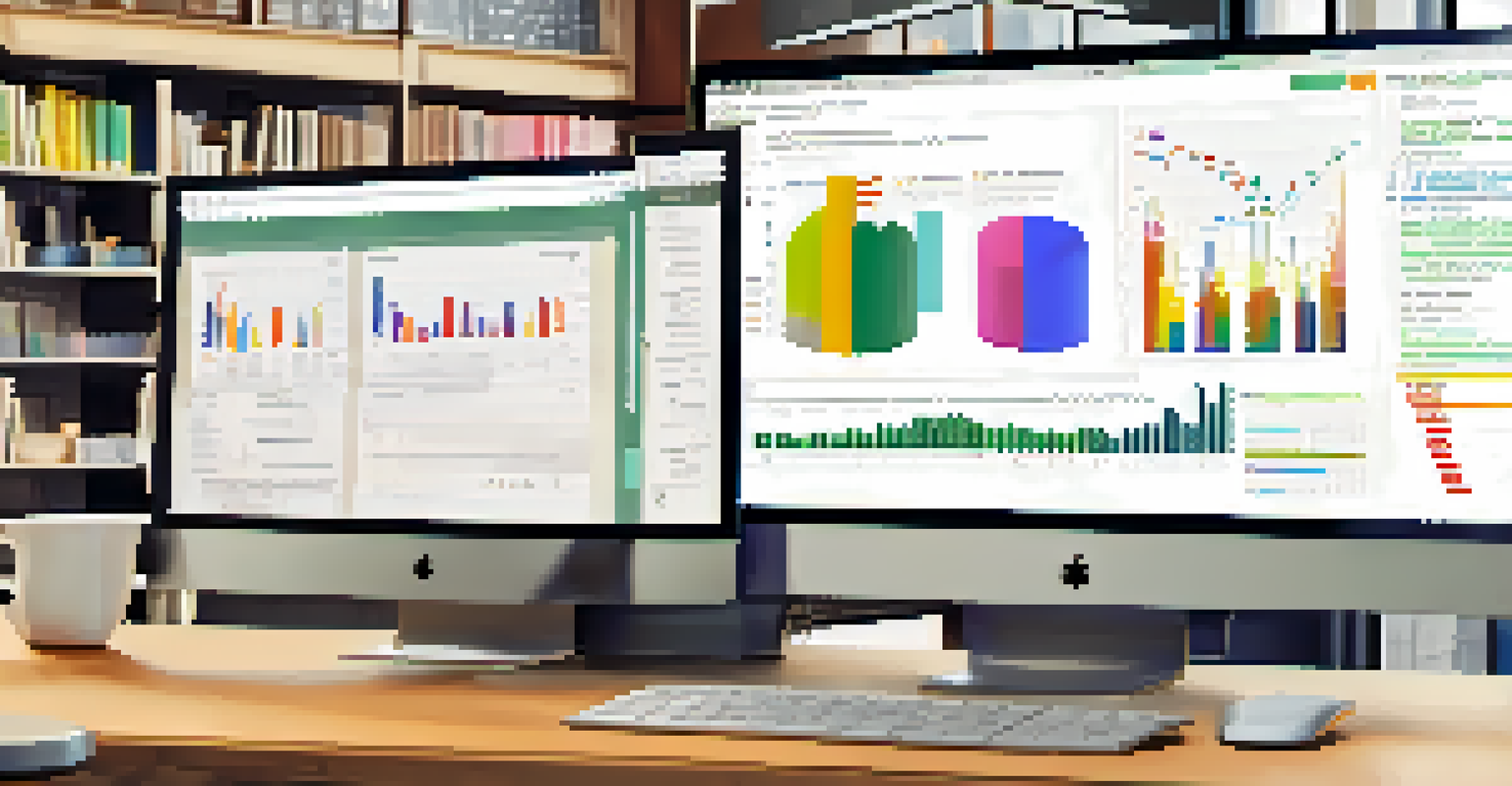Balancing User Needs and Business Goals in Software Design

Understanding User Needs and Their Importance
User needs are the foundation of any software design. They encompass what users require from a product to solve their problems effectively. By focusing on these needs, designers can create solutions that resonate with the target audience.
The best way to predict the future is to create it.
When users feel that their needs are being met, their engagement and satisfaction increase significantly. This leads to higher retention rates and positive word-of-mouth, which are crucial for a software's success. Ignoring user needs, on the other hand, can result in a product that fails to connect with its audience.
A practical approach to understanding user needs is through user research, including surveys, interviews, and usability testing. These methods provide valuable insights that guide the design process and ensure that the final product is not only usable but also enjoyable.
Identifying Business Goals in Software Design
Business goals define the direction and success metrics for a software project. They typically include objectives like increasing revenue, enhancing brand visibility, or improving customer service. Aligning design efforts with these goals is essential for justifying the investment in software development.

For instance, if a company's goal is to boost sales, the software should incorporate features that facilitate easier purchases or highlight promotional offers. This alignment ensures that every design decision contributes to achieving broader business objectives.
User Needs Drive Software Success
Focusing on user needs enhances engagement and satisfaction, leading to better retention and positive word-of-mouth.
To identify these goals, stakeholders should engage in discussions about their vision and what success looks like for them. This clarity helps designers make informed choices that support both user satisfaction and business performance.
The Tug-of-War: User Needs vs. Business Goals
Balancing user needs and business goals often feels like a tug-of-war. On one side, you have users demanding intuitive experiences, and on the other, businesses pushing for profitability and growth. This dynamic can create tension, making it challenging to satisfy both parties.
Design is not just what it looks like and feels like. Design is how it works.
For example, a user might want a feature that enhances their experience but requires significant resources to implement. Meanwhile, the business may be focused on features that drive revenue, potentially neglecting user experience. Finding common ground is crucial for long-term success.
The key is to foster an environment of collaboration where both user feedback and business objectives are valued. This approach encourages innovative solutions that serve both ends, ultimately leading to a more successful product.
Creating a Unified Design Strategy
A unified design strategy acts as a bridge between user needs and business goals. This strategy should outline how to prioritize features, ensuring that both user experience and business objectives are met. By doing so, teams can work more cohesively towards a shared vision.
Consider developing personas that represent both users and business stakeholders. This can help in visualizing how different features impact each group, leading to more informed design decisions. It’s about creating a design language that speaks to both audiences.
Aligning Design with Business Goals
Design decisions should directly support business objectives to justify investments and drive profitability.
Regular team meetings that include designers, developers, and business strategists can also foster a collaborative environment. These discussions can focus on aligning priorities and making necessary adjustments to stay on track with both user and business needs.
Utilizing User Feedback for Better Design Decisions
User feedback is a goldmine for improving software design. By actively seeking input from users throughout the development process, teams can make real-time adjustments that enhance usability. This feedback loop ensures that user needs remain at the forefront of design decisions.
For instance, conducting beta tests allows users to interact with the software before its official launch. Their insights can reveal pain points and areas for improvement that might not have been previously considered. This iterative process leads to a more polished final product.
Moreover, feedback can also guide business decisions by highlighting which features resonate most with users. This information can help prioritize future development efforts and marketing strategies, creating a product that truly serves its audience.
Implementing Agile Methodologies for Flexibility
Agile methodologies offer a flexible framework for balancing user needs and business goals. By breaking down projects into manageable sprints, teams can quickly adapt to changes based on user feedback and evolving business priorities. This iterative approach fosters continuous improvement.
For example, during each sprint, teams can focus on developing features that address specific user pain points. After testing these features, they can assess their impact on business metrics, making necessary adjustments for the next iteration. This cycle keeps the project aligned with both user expectations and business objectives.
Feedback Fuels Continuous Improvement
User feedback is crucial for refining software design, helping teams make real-time adjustments that enhance usability.
Additionally, agile encourages cross-functional collaboration, ensuring that designers, developers, and business strategists work together throughout the project. This collaboration strengthens the understanding of how design choices affect both user satisfaction and business outcomes.
Measuring Success: KPIs for Both Users and Business
Measuring success is essential for understanding the impact of your design decisions. Key Performance Indicators (KPIs) can provide insights into how well user needs and business goals align. Establishing clear KPIs helps teams track progress and make data-driven decisions.
For instance, user engagement metrics, such as time spent on the app or feature usage rates, can indicate how well the design meets user needs. Simultaneously, business metrics like conversion rates or customer acquisition costs can show the effectiveness of the software in achieving business goals.

By analyzing both sets of KPIs, teams can identify areas for improvement and adjust strategies accordingly. This holistic view ensures that both user satisfaction and business profitability are prioritized, leading to sustainable success.